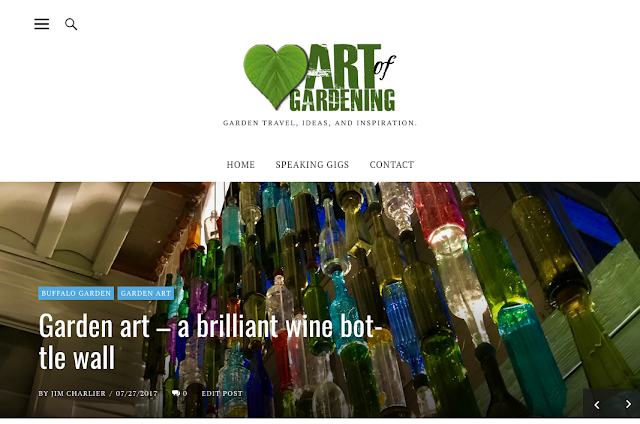A Native American garden

While on vacation in Cape Cod, we did get to visit Plimouth Plantation, a recreated pilgrim village just outside Plymouth, MA. There were two things made this a great "exhibit" (for me anyway).
One was that the pilgrim "actors" are not only in character at all times, they take on the persona of a pilgrim that actually crossed on the Mayflower and lived in the original Plimouth. They are so in character that anything that happened beyond about 1630, they fain ignorance.
The other was the fact that the recreated village is as much about the indigenous, 12,000-year inhabitants, the Wampanoags, as the Pilgrims.
After a short explanatory film, the first area to visit is a small Wampanoag settlement. Usually a few families made up a settlement–all buildings built around a common garden. The "actors" here aren't actors. They are actual Wampanoags. They don't pretend to be anything but Wampanoags wearing clothing their ancestors would have worn in the 1600s. You can ask them anything about Wampanoag history or their experiences as modern-day Wampanoags.
 A bit of a visual mess, but there's an underlying organization and ecosystem to a Wampanoag garden. Helped the Pilgrims get through their first few years!
A bit of a visual mess, but there's an underlying organization and ecosystem to a Wampanoag garden. Helped the Pilgrims get through their first few years!The community garden was sort of a visual mess. Weeds weren't a priority. Rows weren't a consideration. They grew mostly corn, beans and squash (called a Three Sisters Garden). As the corn stalks grew, the beans grew up around them, using the stalks as poles. Then the squash would grow as vines around the corn stalks–companion planting centuries before there was a name for it. Scientifically, this is a great method of growing these specific vegetables, each benefits the other with nutrients and leaves behind nutrients for future plantings. Sunflowers would be planted along the north side, so as not to shade the three sisters.
 Lunch, on this particular day, was rabbit, being cooked on a spit by mom here.
Lunch, on this particular day, was rabbit, being cooked on a spit by mom here. And I don't think I have to mention that everything was organically grown. No plowing or tilling either!
They rotated their gardens a bit each year and if the ground looked like it might be becoming over planted, they'd throw in a herring (alewife, in Wampanoag) in each planting "hill" that would release nitrogen as it decomposed.
I had to ask what the "lookout tower" looking thing was in the middle of the garden. It was where they sent the little girls of the community to play with their dolls and toys during the day–their job was to scare away the birds when they saw them land by waving their arms and making noise–two things little girls do well.






Thank you for sharing this bit about the garden at Plimouth Plantation. I remember going there as a child--the actors, the inside of a small house, but nothing of the gardens. I wonder if there are more like this--I've never seen another.
ReplyDeleteNice tour!
ReplyDeleteHi Jim. I wandered into your blog from elsewhere - but I'm glad I did! I've had a great time reading all your posts.
ReplyDeleteThe Plymouth Plantation sounds fascinating.
Great tours round all those other places too.
Thanks for a lovely blog :)
Susan,
ReplyDeleteI don't know if there are more like this. I was there back in the early '90s and don't remember the native Wampanoags being so integrated into the "story" of the place.
How it grows,
Thanks. I have a little native blood in my family so I was interested in how this northern tribe lived. Someday I may find out more about my own native history.
Nutty Gnome,
Thanks for stopping by. Glad you like. Incredible tea house you've got going on over at your place. I'll keep tuned in to see how it develops.